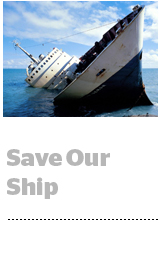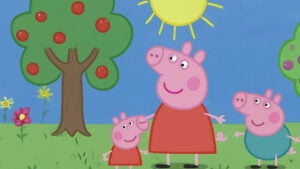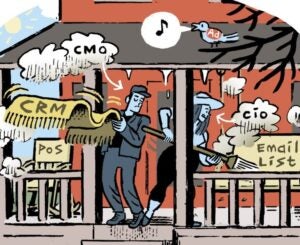 The ailing agency-client relationship is so bad that it resembles a married couple who “hasn’t had sex since 1972.”
The ailing agency-client relationship is so bad that it resembles a married couple who “hasn’t had sex since 1972.”
That’s the grim assessment of Debra Giampoli, director of global strategic agency relations at Mondelez. She speaks from experience: Mondelez has sometimes seen its smaller brands neglected by larger agencies that didn’t understand their business needs.
“We’re working in a model of engagement that was designed for a world that no longer exists,” Giampoli said this week at the ANA’s Advertising Financial Management Conference. “The old adage of speed, quality and cost doesn’t work anymore.”
The strained agency-client relationship was examined from many angles during the conference, held in Boca Raton, Fla. In addition to the outdated working model pilloried by Giampoli, a broken pay structure can be traced back 25 years as workloads have grown and fees have declined.
“Agencies have been slowly destroying themselves in the past few years and their clients have helped them,” said Michael Farmer, chairman of agency consulting firm Farmer & Co. LLC.
Farmer shared research showing that agencies have faced a 4.5%-per-year annual compound decline in retainers and fees per client since 1992, minus inflation. A client that pays their agency $100,000 today would have paid an equivalent of $450,000 25 years ago.
Broken pay models are being further dragged down by an atmosphere of mistrust and a lack of transparency at agencies around client business goals.
“We need to talk about the problem and solve it together as opposed to pointing fingers and blaming each other,” Brad Charron, SVP and GM of NBTY’s food division, said Monday at the conference. “It would be awful if agencies didn’t know what my goals or metrics were.”
Unfortunately, many don’t. The problem goes back to the beginning of the relationship, when scopes of work [SOWs] are drawn up that don’t represent client KPIs, Farmer said.
“Random and poor SOW documentation” translates into wasted costs and unsatisfied clients, he said.
Part of this pricing issue is cultural. Agencies see themselves as creative businesses whose work can’t be measured. Their SOWs typically have no metrics for output, price or productivity, leaving clients to make inferences based on murky, opaque margins.
It hasn’t helped that agencies have been forced to downsize and reduce salaries to generate profit margins, leaving fewer resources – and motivated employees – to solve client problems at a time when they are increasingly complex. It’s no secret the agency world is losing talent to shinier tech or consulting companies with better pay.
“Agencies underpay their people relative to Google, Facebook, IBM, Accenture and Deloitte – all the people they compete with today,” Farmer said. “The starting salary [at agencies] is $45,000 less [on average] than what competitors pay.”
Agencies are losing their senior talent, too. Giampoli noted that Andrew Keller, the former CEO of Crispin Porter + Bogusky, went to Facebook, while Tor Myhren, who was responsible for pulling Grey out of a creative rut, moved on to Apple last year.
But when both sides embrace change, success may be possible.
Farmer helps his agency clients charge their clients more accurately with a pricing structure that’s rare in the agency business. He likened his agencies to “ad factories” that manufacture a product.
“You have to know the volume and efficiency of manufacturing and what the factory is paid,” Farmer said. “We know the fees and resources. Divide the output by the fees to get a price. This conversation doesn’t happen in the agency world.”
Giampoli found that by rethinking the way her smaller brands engage with their agencies, she was able to turn the relationship around. This involved compressing project-based timelines to 20 weeks and hand-picking talent to work on each account.
“If you’re going to build an agency from scratch today, you won’t build one that looks like the big, traditional global agencies we have now,” she said. “You’ll see more agencies that don’t have fixed talent in place. … The world needs more fluidity to respond to change.”















